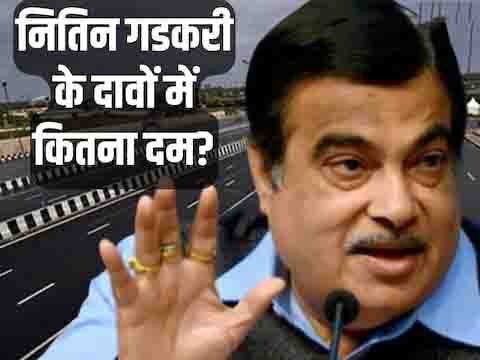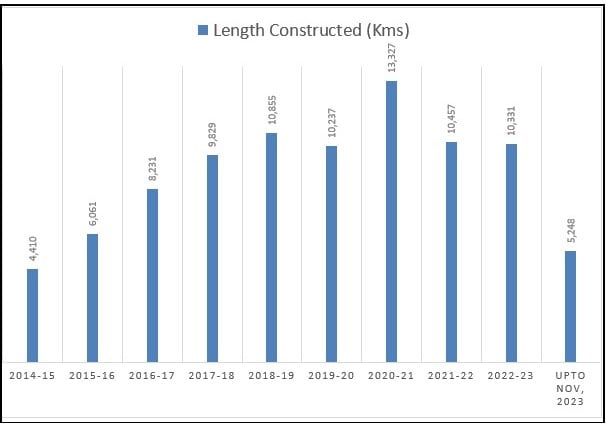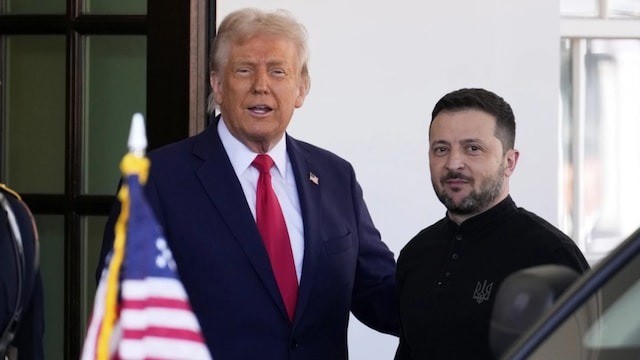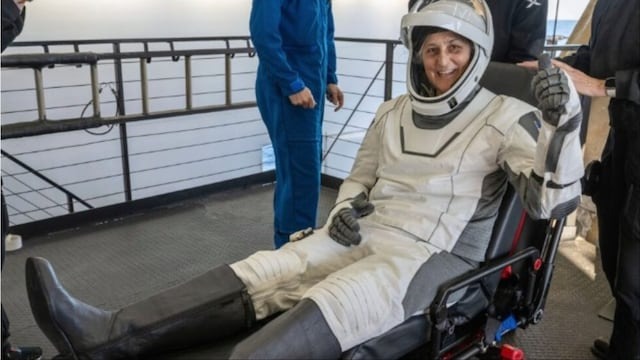
Indian and American Express Ways: Who is the most talked about minister in the Modi government? If someone asks you this question, what would be the answer? Nitin Gadkari? Perhaps most people would answer this. In whichever program Gadkari goes, he says something that the media cannot ignore. Recently he said that he had an offer from the opposition to make him the PM, but he refused. He did not tell who made the offer. He told as much as was required of him.
Gadkari says that he does not have a PR manager. Still, he remains in the news in the media. And, the special thing is that this is not negative publicity. He himself is a 'case study' for PR managers. A separate article can be written on this skill of his. This is not the topic of this article.
Gadkari has also built his image as a minister who is honest and builds highways and roads at a fast pace. Wherever he goes, he lists the achievements of his ministry and compares it with America and says that in this time the roads in your country will compete with America or will become better than America…
On September 25, when he went to Gurugram to seek votes for BJP in the Haryana assembly elections, he said the same thing there. While listing the works of his ministry, he said that by December 2024, projects worth Rs 2 lakh crore in Haryana will either be completed, started, or in the process of being started. He said, 'By the end of 2024, the national highway infrastructure in Haryana will be better than America.'
Gadkari has spoken on several occasions about giving India highways or highways infrastructure like or better than America. But, is this really possible? Is this comparison between India and America correct? Here we have tried to find answers to some such natural questions.
To find the answer, we have tried to understand the highway infrastructure of India and America as well as the challenges of both by collecting data from various sources including Nitin Gadkari's ministry, the US Department of Transportation (Federal Highway Administration - FHWA), National Highway Authority of India (NHAI) reports. First, let's take a look at the comparative data of both the countries:
Total road network
- The total road network in India is 66.71 lakh kilometers long (2023 data).
- The length of National Highways is 1,46,145 lakh kilometers (about 2% of the total road length).
- The length of roads per 1000 people in India is about 5.13 kilometers.
- The total road network in America: is 68.03 lakh kilometers.
- There are 2.64 lakh kilometers of roads under the National Highway System (NHS). Out of these, 78000
- kilometer is an Interstate Highway (part of the National Highway System).
- The length of roads per 1000 people is approximately 20.1 kilometers. Almost four times more than in India.
In India, national highways (1.43 lakh km) are only 2.3% of the total road network, but they carry 40% of the traffic load. In the US, interstate highways are about 1.2% of the total road network, but nearly a quarter of the vehicle journeys are completed on them.
New highways
- Under the 'Bharatmala Project' in India, there is a plan to build 34,800 km of new highways by 2027-28. By 2023, 15043 km had been built.
- The target was to build an average of 40 kilometers of highways every day in India, but only 28.3 kilometers could be built (2022-23). In 2022-23, 10331 kilometers of highways were built in India.

On the other hand, America is in such a situation that there is no longer much focus on building new highways. The focus is on maintaining the highways and constantly keeping them ready for new technology vehicles. That means, upgrading them. There, $110 billion was allocated in 2021 to repair and upgrade roads, highways and bridges.
Budgeting and investments
- In India, the Union Budget 2024-25 allocated Rs 2.78 lakh crore (about $33 billion) for roads and highways.
- In the US, in 2021, the Biden administration gave $70 billion for the expansion and maintenance of highways.
- While India emphasizes on the PPP model for construction, America relies heavily on the Highway Trust Fund (HTF). This fund is collected by levying tax on vehicle fuel.
Road Safety
In India, more than 1.68 lakh deaths occurred in road accidents in 2022. One of the main reasons for this is also bad roads. It is common to have potholes on the roads here and it is also common for potholes to form on newly built roads.
In the US, there were much fewer deaths (42,500) in road accidents in 2022 than in India. Bad roads were not the reason for these accidents. Most of the accidents occurred due to high speed. There
is an emphasis on building smart highways in the US. A lot of investment is being made in better road engineering design and safety-related technologies.
Comparison in terms of technology
In India, the FASTag system has improved traffic at toll plazas. GIS mapping and drone surveys are being done to monitor road construction projects. Also, there is an emphasis on building 'green highways'.
Smart transportation systems and intelligent highway technologies (ITS) are being increasingly used in the US. Attention is being paid to developing infrastructure on roads for automated and electric vehicles (AVs and EVs).
If we compare the challenges of both the countries,
then the challenges of India and America in the field of highways are also very different. In India, the major challenges are delays in getting land and environmental clearances, delays in arranging funds for the project, lack of guarantee of complete quality in construction, and maintenance problems.
On the other hand, America's challenge is different. A large part of the American highway network was built in the mid-20th century and now requires heavy repairs and upgrades. Due to the decrease in fuel tax collection, it is not easy to raise funds for highways. Apart from this, challenges like political deadlock and urban sprawl also come up. Now based on these figures, you can guess whether comparing India with America in terms of roads is an exaggeration, is it just a sweet dream shown to the public by the leaders or is it a reality?

 Desk
Desk Share
Share
_939839210.jpg)





